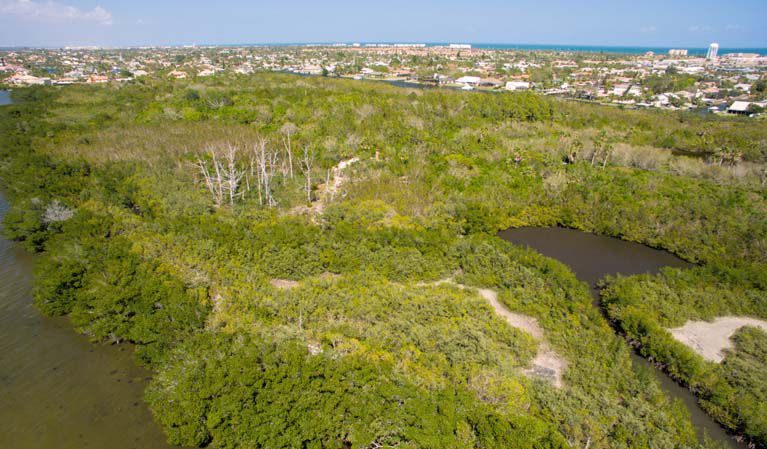
The view of Satellite Beach from the air shows a large green gap in the densely built-up riverfront, the result of a once-fierce debate that killed a bridge project that would have linked Samsons Island to the mainland, opening it to development.
These days, mansions cover nearly every inch of the Satellite Beach riverfront, except the 52-acre Samsons Island Nature Park, which not only remained undeveloped after bridge opponents won a contentious battle in the 1970s, but has been preserved for passive recreation with only a limited number of visitors allowed.
A spoil island created by dumping dredged material onto a marshy area in the 1950s, the property was given to the city in 1968 with the stipulation that it be used for a park.
It was during the 1970s when the bridge situation – and the future of the riverfront – could have gone either way.
During those years, the city considered several options for Samsons Island, including construction of a bridge to open up the island as a traditional park with an amphitheater and other amenities.
In the end, after many heated discussions, permits for a bridge were denied and city leaders eventually dedicated the property to the most passive and environmentally friendly purpose: Providing habitat for wild animals – more than 30 species of birds, including great blue herons, egrets, ospreys, roseate spoonbills, pileated woodpeckers and horned owls use the island – and green space for the residents. Strict provisions were put in place so that the nature park would not be overused.
Only 36 visitors are allowed on the island each day and no more than 36 are allowed to camp overnight, spread among four primitive campgrounds. Besides the campgrounds, the island has docks for access, two pavilions for shelter and one bathroom.
Park Monitor Dori Hughes keeps an eye on visitor usage and runs the pontoon boat that ferries passengers to the island twice weekly from a dock behind the Satellite Beach Fire Department, making sure to watch carefully on cold mornings for manatees seeking warm water.
Passing by luxurious yachts, sailboats and sport fishing boats, Hughes navigates the long pontoon boat with skill even in a slight crosswind, while dolphins and other aquatic life splash along the red mangrove shoreline.
“I can’t believe I get paid to do this,” Hughes said. “People are amazed there’s a wilderness within the city and a lot of people don’t know there are so many small canals on the island.”
A longtime resident of Brevard County, Hughes remembers the earlier discussions about development of the island and said she is glad plans for a bridge were scuttled because it would have hurt the island environment.
“No bridge means no amphitheater,’’ she said.



